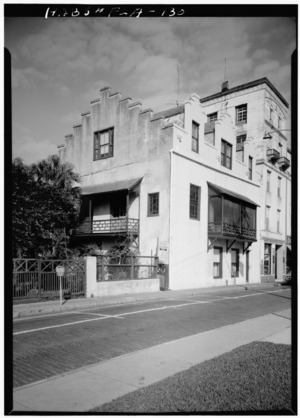Pedro Benedit Horruytiner facts for kids
Quick facts for kids
Pedro Benedit Horruytiner
|
|
|---|---|
| Royal Governor of La Florida | |
| In office 11 April 1646 – 8 January 1648 |
|
| Preceded by | Benito Ruíz de Salazar Vallecilla |
| Succeeded by | Benito Ruíz de Salazar Vallecilla |
| In office 19 October 1651 – 18 June 1654 |
|
| Preceded by | Nicolás Ponce de León |
| Succeeded by | Diego de Rebolledo |
| Personal details | |
| Born | 1613 Zaragoza, Spain |
| Died | November 20, 1684 (aged 70) Florida |
| Profession | Soldier and Administrator (Governor of Florida) |
Pedro Benedit Horruytiner y Catalán (born in 1613 – died November 20, 1684) was a Spanish soldier. He served as a leader in Spanish Florida (also called La Florida). He was a co-governor from 1646 to 1648 and then the main governor from 1651 to 1654. When the governor at the time, Benito Ruíz de Salazar Vallecilla, was temporarily removed, Pedro Horruytiner and Francisco Menendez Marquez stepped in to lead together.
Early Life and Military Career
Pedro Benedit Horruytiner was born in Zaragoza, Spain, in 1613. His parents were Gilberto Benedit Horruytiner and Inés Catalán. He was also the nephew of a previous Florida governor, Luis de Horruytiner. Pedro joined the Spanish Army when he was young, on December 10, 1635. He worked his way up to important ranks like sergeant major and lieutenant colonel. These were high military positions.
Governor of Florida
Pedro Horruytiner arrived in Saint Augustine, the capital of Spanish Florida, on April 11, 1646. On this day, he officially became an acting co-governor of Florida.
In September 1647, Horruytiner and Francisco Menendez Marquez faced a challenge. The Chisca Indians had attacked Christianized Timucuan villages. Horruytiner and Marquez told the Chisca people they had two months to decide. They could either be defeated in Florida or move into the Christian Timucua towns. The Chisca leaders chose to settle in the Timucua mission villages.
Around the same time, Horruytiner sent a soldier named Pedro de Florencia on a mission. He wanted to find the Native Americans who used to live in the San Francisco de Potano and Santa Fé de Teleco missions. He was worried these places would become empty. The Spanish tried to get people to live in these settlements again. However, the number of people living there continued to decrease over time.
Pedro Horruytiner's first time as co-governor ended on January 8, 1648. He was later appointed as the main governor again on October 19, 1651. He finished his second term on June 18, 1654. After that, Diego de Rebolledo took over as governor. Horruytiner continued to serve the Spanish Crown until he died. He passed away at age 71 on November 20, 1684, in Florida.
Family Life
Pedro Benedit Horruytiner married María Ruíz de Cañizares Mexía y Florencia. They got married in Saint Augustine on February 19, 1637. They had several children together. Their children included Isabel, Manuela, Jacobina, Juan, Pedro, Josef, and Lorenzo. One of their sons, Juan Horruytiner, became a captain in the Spanish Army.
Legacy
- Pedro Benedit Horruytiner had a private library in St. Augustine. This library is one of the oldest preserved in Florida. Historians Luis R. Arana and Eugenia B. Arana wrote about its history. Their work was called "A private library in St Augustine, 1680." It appeared in a history journal.
- In the book Ghosts of St. Augustine, there is a story about Governor Don Pedro Horruytiner. The story is called The Gallant Governor. It talks about people seeing ghostly figures. These sightings have been linked to Horruytiner and even to a cat.
See also
 In Spanish: Pedro Benedit Horruytiner para niños
In Spanish: Pedro Benedit Horruytiner para niños


